
Albany is a port city in the Great Southern region in the Australian state of Western Australia, 418 kilometres (260 mi) southeast of Perth, the state capital. The city centre is at the northern edge of Princess Royal Harbour, which is a part of King George Sound. The central business district is bounded by Mount Clarence to the east and Mount Melville to the west. The city is in the local government area of the City of Albany. While it is the oldest colonial, although not European, settlement in Western Australia - predating Perth and Fremantle by over two years - it was a semi-exclave of New South Wales for over four years until it was made part of the Swan River Colony.

St Albans is a small and historic village on the Macdonald River, New South Wales, Australia, about 94 kilometres (65 mi) north west of Sydney. At the 2011 census, St Albans and the surrounding area had a population of 305 people.

Experiment Farm Cottage is a heritage-listed former farm and residence and now house museum at 9 Ruse Street, Harris Park, City of Parramatta, Sydney, Australia. It is one of Australia's oldest standing residences, being built in c.1834. It is located at the site of Experiment Farm, Australia's first European farmstead, which was itself created by Australia's first land grant. It was added to the New South Wales State Heritage Register on 2 April 1999.
Captain Sir Richard Spencer KCH the son of Richard Spencer, a London merchant. He was a captain of the Royal Navy who served in a number of battles, particularly against the French. In 1833 he was appointed Government Resident at King George's Sound, now Albany, Western Australia. He was born in Southwark, London, and died at Strawberry Hill Government Farm, Mira Mar in Albany, Western Australia.
Mira Mar is a northeastern suburb of Albany, Western Australia, between the Albany city centre and Spencer Park in the local government area of the City of Albany.
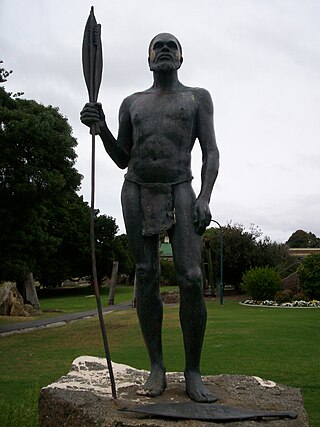
Mokare was a Noongar Aboriginal man from the south-west corner of Australia, who was pivotal in aiding European exploration of the area.

Tranby (Peninsula Farm) is an historic farmers cottage located on Johnson Road in Maylands overlooking the Swan River opposite Kuljak Island, and is one of the oldest surviving buildings from the early settlement of the Swan River Colony. It is described as an English cottage-style farmhouse with loft bedrooms and wide verandahs and is associated with a group of devout Wesleyan Methodists, led by Joseph Hardey and other members of his family, who arrived in Western Australia on the ship Tranby in February 1830.

Kendenup is a small town in the Great Southern region of Western Australia, within the Shire of Plantagenet. It is known for its view of Porongurup Range and the Stirling Range. It is 345 kilometres (214 mi) south east of Perth and 22 kilometres (14 mi) north of Mount Barker. The Great Southern Railway passes through the town, being one of the original stations on the line. At the 2006 census, Kendenup had a population of 1,290.

The Old Government House is a heritage-listed former "country" residence used by ten early governors of New South Wales between 1800 and 1847, located in Parramatta Park in Parramatta, New South Wales, in the greater metropolitan area of Western Sydney, New South Wales, Australia. It is considered a property of national and international significance as an archaeological resource. It also serves to demonstrate how the British Empire expanded and Australian society has evolved since 1788.

Eliza Lucy Grey, Lady Grey, was the daughter of British Royal Navy officer Captain Sir Richard Spencer and Ann, Lady Spencer. She was the wife of Sir George Grey.
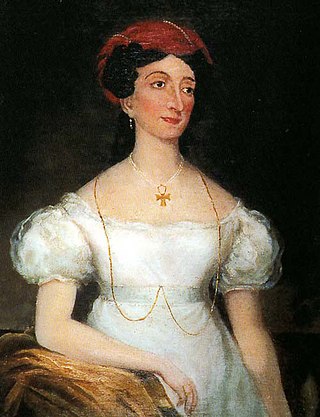
Ann Warden Spencer, Lady Spencer was the daughter of Captain Matthew Liddon and Ann Warden. She was the wife of British Royal Navy Captain Sir Richard Spencer.
Cooya Pooya Station most often referred to as Cooya Pooya or Cooyapooya is a pastoral lease operating as a sheep station in Western Australia.
The National Trust of Western Australia, officially the National Trust of Australia (W.A.), is a statutory authority that delivers heritage services, including conservation and interpretation, on behalf of the Western Australian government and community. It is responsible for managing heritage properties and collections, as well as natural heritage management and education.
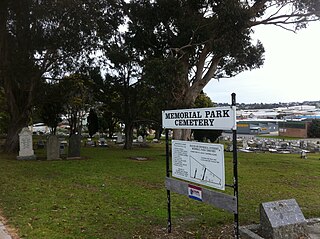
Memorial Park Cemetery also known as Pioneer Cemetery and Old Albany Cemetery is a cemetery located along Middleton Road in the city of Albany in the Great Southern region of Western Australia.
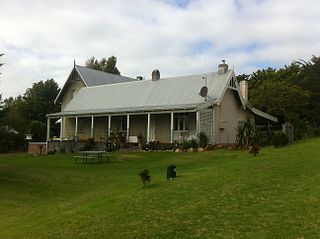
Camfield House, also referred to as Annesfield, is a conglomerate of buildings in Albany in the Great Southern region of Western Australia.
Francis Bird was a businessman and architect in Western Australia. Bird was born in Hyde Park in London, the third son of Mr and Mrs George Bird of Pinner Hall, Middlesex.

Patrick Taylor Cottage, also referred to as Patrick Taylor Cottage Museum, is a museum in Albany in the Great Southern region of Western Australia. It the oldest surviving dwelling in Western Australia.
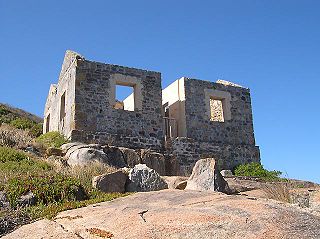
The coastline of the Albany area was observed by Europeans for the first time in 1627 by the Dutchman François Thijssen, captain of the ship 't Gulden Zeepaert, who sailed to the east as far as Ceduna in South Australia and back. Captain Thijssen had discovered the south coast of Australia and charted about 1,768 kilometres (1,099 mi) of it between Cape Leeuwin and the Nuyts Archipelago.
Brownlow Hill Estate is a heritage-listed former residence and working farm and now residence and dairy farm located at Brownlow Hill Loop Road in the outer south-western Sydney settlement of Brownlow Hill in the Wollondilly Shire local government area of New South Wales, Australia. It was designed and established by Alexander Macleay and built from 1827 by George Macleay, his son). It is also known as Lowe's Hill and Glendaruel (Glendaurel). The property is privately owned. It was added to the New South Wales State Heritage Register on 25 January 2001.
Arthur Trimmer (1805–1877) was one of three brothers who were early settlers in the colony of Western Australia. He was the grandson of Sarah Trimmer (1741–1810), an educational reformer and writer.

















